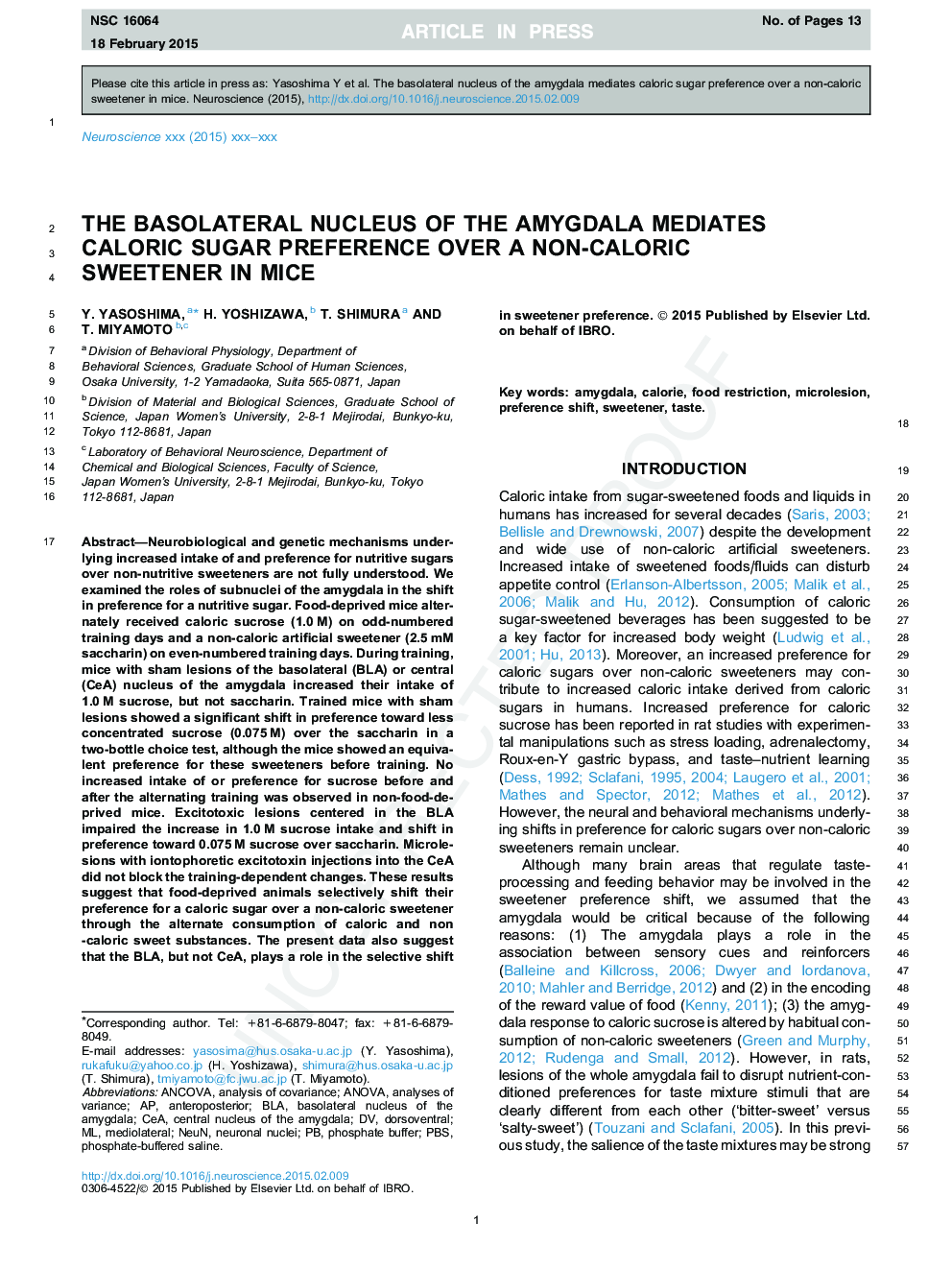| Article ID | Journal | Published Year | Pages | File Type |
|---|---|---|---|---|
| 6272759 | Neuroscience | 2015 | 13 Pages |
Abstract
Neurobiological and genetic mechanisms underlying increased intake of and preference for nutritive sugars over non-nutritive sweeteners are not fully understood. We examined the roles of subnuclei of the amygdala in the shift in preference for a nutritive sugar. Food-deprived mice alternately received caloric sucrose (1.0Â M) on odd-numbered training days and a non-caloric artificial sweetener (2.5Â mM saccharin) on even-numbered training days. During training, mice with sham lesions of the basolateral (BLA) or central (CeA) nucleus of the amygdala increased their intake of 1.0Â M sucrose, but not saccharin. Trained mice with sham lesions showed a significant shift in preference toward less concentrated sucrose (0.075Â M) over the saccharin in a two-bottle choice test, although the mice showed an equivalent preference for these sweeteners before training. No increased intake of or preference for sucrose before and after the alternating training was observed in non-food-deprived mice. Excitotoxic lesions centered in the BLA impaired the increase in 1.0Â M sucrose intake and shift in preference toward 0.075Â M sucrose over saccharin. Microlesions with iontophoretic excitotoxin injections into the CeA did not block the training-dependent changes. These results suggest that food-deprived animals selectively shift their preference for a caloric sugar over a non-caloric sweetener through the alternate consumption of caloric and non-caloric sweet substances. The present data also suggest that the BLA, but not CeA, plays a role in the selective shift in sweetener preference.
Keywords
Related Topics
Life Sciences
Neuroscience
Neuroscience (General)
Authors
Y. Yasoshima, H. Yoshizawa, T. Shimura, T. Miyamoto,
